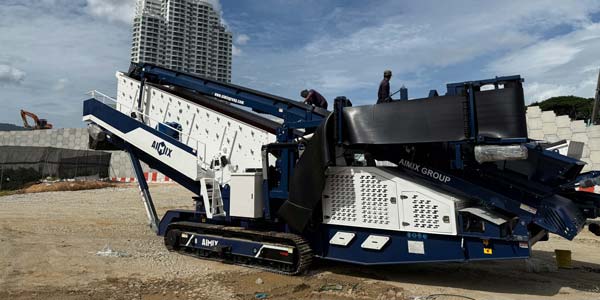


The integration of digital intelligence into heavy machinery is more than a trend—it’s a necessity
In an industry where margins are narrow and downtime is costly, the integration of digital intelligence into heavy machinery is more than a trend—it’s a necessity. The age of the “smart quarry” is upon us, and at its core lies a transformative force: IoT-enabled gravel crushers powered by real-time data analytics. These connected systems are reshaping how aggregates are extracted, processed, and delivered. Far beyond automation, these innovations empower operators with actionable insights, predictive foresight, and operational agility. As quarries face increasing pressure to improve sustainability, reduce costs, and boost productivity, intelligent gravel crushers offer a clear path forward—one defined by connectivity, precision, and measurable impact.
Modern gravel crushers are no longer blind machines driven solely by brute force. They are now equipped with robust sensor networks that monitor every aspect of the crushing process—motor loads, vibration levels, temperature gradients, throughput rates, and wear part status. These sensors capture high-frequency data in real time, forming the foundation of intelligent decision-making on the ground.
This granular visibility allows site managers to identify anomalies before they escalate into failures. For instance, a subtle uptick in vibration in a secondary crusher may signal bearing fatigue. When flagged early, it enables proactive maintenance scheduling, avoiding unplanned downtime and catastrophic mechanical failure. Downtime becomes preventable, not inevitable.
With continuous streams of performance data, IoT-enabled crushers can adjust in real time to variable feed conditions. Advanced control algorithms modify stone crusher machine settings, choke feeds, and screen outputs based on load conditions, feed material size, and moisture content.
Instead of relying on manual input and post-event analysis, operations can now dynamically optimize production on the fly. This leads to improved fragmentation control, reduced energy consumption, and more consistent product gradation. The result? Greater efficiency, tighter quality control, and reduced reprocessing.
Traditional maintenance schedules often rely on fixed intervals or reactive repairs—both approaches that can be costly and imprecise. By integrating real-time sensor data into cloud-based analytics platforms, gravel producers can shift to a predictive maintenance model.
Machine learning algorithms analyze historical and real-time data to identify wear patterns and performance drift. This allows technicians to intervene at the optimal moment—before damage occurs but without wasting service life. Predictive analytics improves component longevity, cuts repair costs, and boosts equipment uptime.
Analytics platforms also support broader operational intelligence. They allow quarry managers to compare crusher performance across different sites, shifts, and even manufacturers. By visualizing production bottlenecks or load imbalances, stakeholders can make informed decisions that elevate both productivity and profitability.
Operators receive intuitive dashboards that visualize KPIs such as tonnage per hour, energy per ton, and utilization rates. These insights not only drive day-to-day optimization but also inform long-term investment decisions and process redesigns. In essence, data becomes a strategic asset—not just a byproduct of machinery.
One of the most impactful shifts brought by IoT integration is the ability to connect crushing equipment to centralized cloud platforms. Through this digital infrastructure, operators, managers, and service teams can monitor equipment health and production metrics from anywhere in the world.
Remote collaboration becomes seamless. A technician in one region can diagnose a fault in another. Headquarters can orchestrate output across multiple sites based on market demand and resource availability. Cloud connectivity transforms operations into a networked ecosystem where insights flow freely and decisions happen in real time.
As quarries evolve, so too must their technology infrastructure. IoT-enabled gravel crushers are inherently modular and scalable. New sensors can be added, software updates deployed remotely, and analytics platforms expanded to accommodate additional equipment or new operational goals.
This adaptability ensures that digital investments remain relevant as production volumes grow or regulatory standards tighten. The smart crusher is not a static solution; it is an evolving platform for continuous innovation and long-term competitiveness.
The fusion of IoT technology and gravel crushing has ushered in a new era of precision, safety, and strategic insight. What was once a rugged and reactive industry is now becoming predictive, intelligent, and optimized. By embracing real-time data analytics and machine interconnectivity, aggregate producers are not just keeping pace with change—they are redefining what it means to be productive, efficient, and future-ready in the world of materials processing.
